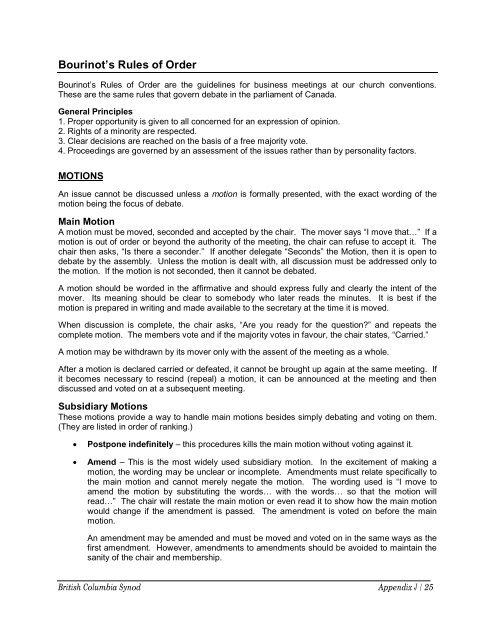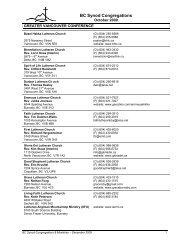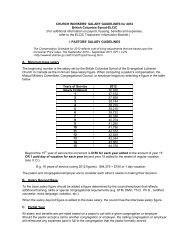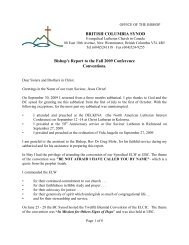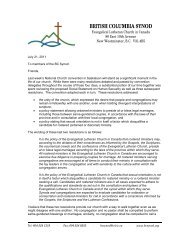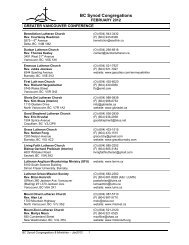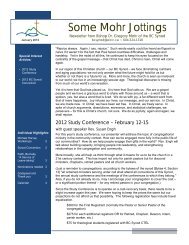In Mission for Others: - BC Synod
In Mission for Others: - BC Synod
In Mission for Others: - BC Synod
Create successful ePaper yourself
Turn your PDF publications into a flip-book with our unique Google optimized e-Paper software.
Bourinot’s Rules of OrderBourinot’s Rules of Order are the guidelines <strong>for</strong> business meetings at our church conventions.These are the same rules that govern debate in the parliament of Canada.General Principles1. Proper opportunity is given to all concerned <strong>for</strong> an expression of opinion.2. Rights of a minority are respected.3. Clear decisions are reached on the basis of a free majority vote.4. Proceedings are governed by an assessment of the issues rather than by personality factors.MOTIONSAn issue cannot be discussed unless a motion is <strong>for</strong>mally presented, with the exact wording of themotion being the focus of debate.Main MotionA motion must be moved, seconded and accepted by the chair. The mover says “I move that…” If amotion is out of order or beyond the authority of the meeting, the chair can refuse to accept it. Thechair then asks, “Is there a seconder.” If another delegate “Seconds” the Motion, then it is open todebate by the assembly. Unless the motion is dealt with, all discussion must be addressed only tothe motion. If the motion is not seconded, then it cannot be debated.A motion should be worded in the affirmative and should express fully and clearly the intent of themover. Its meaning should be clear to somebody who later reads the minutes. It is best if themotion is prepared in writing and made available to the secretary at the time it is moved.When discussion is complete, the chair asks, “Are you ready <strong>for</strong> the question?” and repeats thecomplete motion. The members vote and if the majority votes in favour, the chair states, “Carried.”A motion may be withdrawn by its mover only with the assent of the meeting as a whole.After a motion is declared carried or defeated, it cannot be brought up again at the same meeting. Ifit becomes necessary to rescind (repeal) a motion, it can be announced at the meeting and thendiscussed and voted on at a subsequent meeting.Subsidiary MotionsThese motions provide a way to handle main motions besides simply debating and voting on them.(They are listed in order of ranking.)Postpone indefinitely – this procedures kills the main motion without voting against it.Amend – This is the most widely used subsidiary motion. <strong>In</strong> the excitement of making amotion, the wording may be unclear or incomplete. Amendments must relate specifically tothe main motion and cannot merely negate the motion. The wording used is “I move toamend the motion by substituting the words… with the words… so that the motion willread…” The chair will restate the main motion or even read it to show how the main motionwould change if the amendment is passed. The amendment is voted on be<strong>for</strong>e the mainmotion.An amendment may be amended and must be moved and voted on in the same ways as thefirst amendment. However, amendments to amendments should be avoided to maintain thesanity of the chair and membership.British Columbia <strong>Synod</strong> Appendix J / 25


